District Commercial & Mixed use Architectural Controls
Saskatoon Land’s District Commercial/Mixed Use Design Guidelines are intended to provide a guiding document to facilitate an enhanced level of commercial and mixed use development in the District Commercial Area. These guidelines shall be used to assist in forming the basis of detailed site planning, building design and landscaping for the sites in the area. These guidelines will help achieve Saskatoon Land’s objectives for the District Commercial Area, which are outlined below:
- Creating a high-quality commercial amenity for residents of Evergreen, Aspen Ridge, and surrounding neighbourhoods.
- Creating an enhanced pedestrian environment both within the development sites and along the surrounding streets, which provides safe and comfortable pedestrian movement.
- Facilitating the development of a vibrant commercial focal point within Saskatoon’s northeast growth area.
These guidelines are intended to supplement the City of Saskatoon’s (City) Zoning Bylaw. All developments will be governed by the City’s zoning regulations. In the event there are contradictions between these two documents, the Zoning Bylaw shall take precedence.
District Commercial/Mixed Use at a Glance
The District Commercial/Mixed Use Area is located in northeast Saskatoon. It is strategically located along McOrmond Drive and adjacent to the Evergreen neighbourhood, and one of the newest developing neighbourhoods, Aspen Ridge.
Northeast Quadrant District Commercial Location
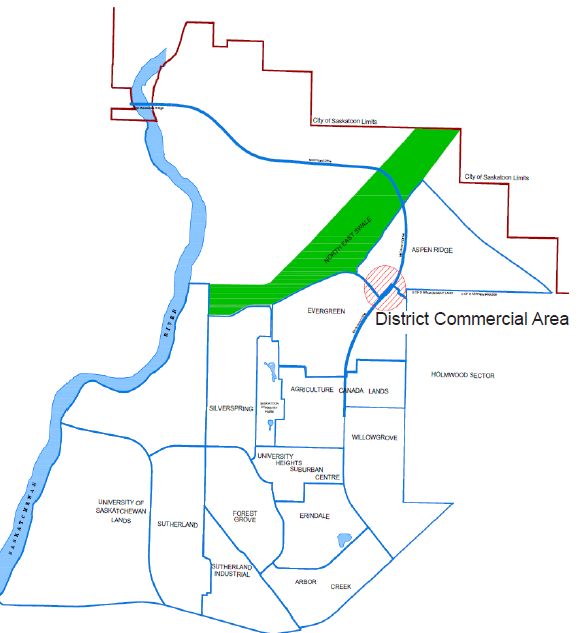 |
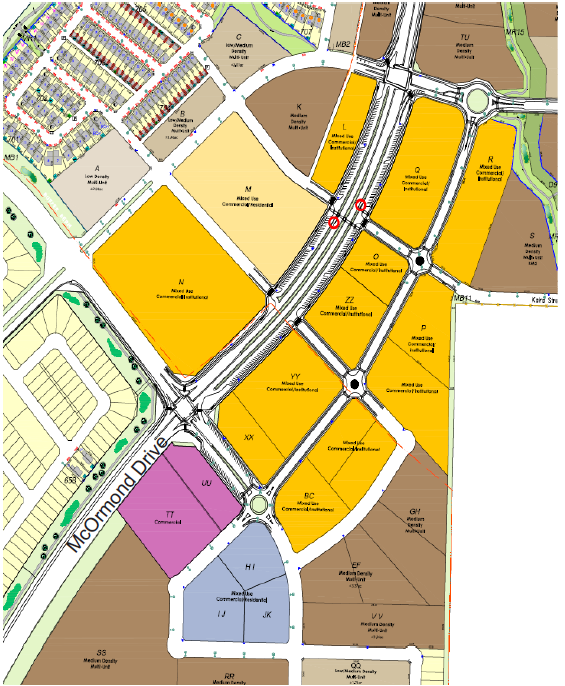 |
Vision
The vision for the District Commercial/Mixed Use Area is to accommodate a broad range of uses including medium- to high-density residential, commercial, and institutional uses in a manner that promotes retail and service based uses at grade level. This District also promotes a compact, pedestrian oriented built form that encourages densification along transit corridors, alternative modes of transportation, and better integration between neighbourhoods.
McOrmond Drive and Chief Mistawasis Bridge
McOrmond Drive is a four-lane arterial road with bicycle lanes and walking paths along the service lanes (laybys) adjacent to the District Commercial Area. This arterial provides multi-modal options for northeast residents. The completion of Saskatoon’s newest bridge (Chief Mistawasis Bridge), and the extension of McOrmond Drive to align with this bridge, connects the residential northeast quadrant of the city with Saskatoon’s thriving employment Industrial sector. The Transportation Division estimates that this bridge will carry approximately 20,000 vehicles per day. As residential growth in the area continues and is highly sought after, Saskatoon Land predicts the number of vehicles using McOrmond Drive will even be greater. At full build-out of Evergreen and Aspen Ridge, there could be approximately 25,000 people living in these two neighbourhood alone. This does not take into account the Silverspring or the Willowgrove neighbourhoods (5,000 and 8,000 people respectively) which would also benefit from this District Commercial Area.
Benefiting Enhancements
The District Commercial Area includes several improvements which add value to, and contribute towards, enhancing the character and vibrancy of the area.
Arterial Laybys and Collector On-street Parking
McOrmond Drive “Multi-way Boulevard” was enhanced to include laybys that serve multi-model uses (pedestrians, cyclists, transit riders, and motorists). Therefore, McOrmond Drive will incorporate an off-street cycle track (separated pedestrian and cycling pathways), transit stops, and angled parking. This area will incorporate streetscaping elements to enhance the visual and pedestrian appeal.

Roundabout and Median Streetscaping (Baltzan Boulevard)
Baltzan Boulevard will include a landscaped median and roundabout, consisting of a mix of soft and hard landscaping. These enhancements will reinforce the District Commercial Area as a unique place, while adding to the pedestrian and visual appeal of the area.
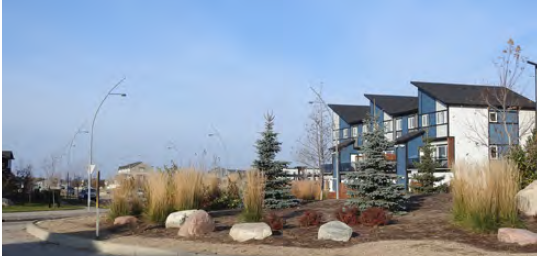
Purchaser Enhancements and Maintenance
For boulevard areas that are not landscaped by Saskatoon Land, the landscaping of the boulevard between the property line and the street curbing will be required by the purchaser as a condition of sale. Maintenance of the boulevard landscaping will be the responsibility of the successful purchaser.
Site Planning
The following are site planning and setback guidelines for all sites:
- Building placement on these sites should be planned cognizant of the surrounding residential community to achieve more of a human scale along the street edge, while helping to buffer the view of the internal parking areas.
- Building placement is encouraged along the primary street.
- Loading and garbage areas must be screened from surrounding properties and public streets through mechanisms such as fencing and/or more intensive landscaping.
- Site signage should be selected and designed cognizant of the area’s residential context. In general, wallmounted signage is encouraged over free-standing signage.
- Building facades and orientation that reinforce the human scale of a pedestrian environment and enhanced walkability is encouraged.
 |
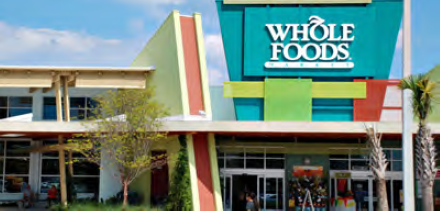 |
 |
| Good example of large format store with significant front elevation detail | Large format store with significant front elevation detail | Example of screened loading area |
Pedestrians and Parking
The following are pedestrian and parking guidelines for all sites:
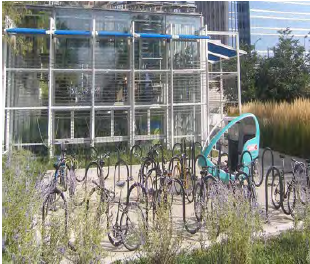 |
 |
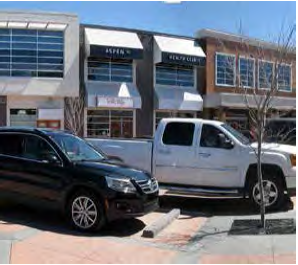 |
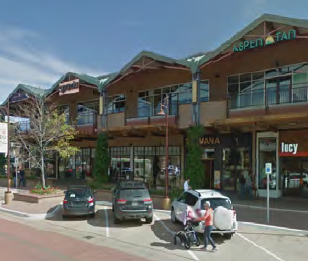 |
| Bicycle storage to encourage active transportation | Allowances for sidewalk patios through proactive site planning | Building-lined streets with angled on-street parking | Pedestrian-oriented streetscape with angled street parking |
- To take advantage of on-street parking, buildings are encouraged to be street-oriented and include elements of an active street frontage.
- Off-street parking should be internalized. Off-street parking located along the side wall of a building may be permitted, provided that the parking area is appropriately buffered with landscaping from the fronting street.
- A mixture of retail and service-based land uses are recommended at grade level to facilitate a vibrant pedestrian-oriented street and to create a ‘main street’ feel that is attractive and comfortable for pedestrians.
- The use of proactive site planning and building layouts that can adapt, and retail that facilitates pedestrian amenity areas and an animated public realm, through the use of sidewalk patios, seating areas, etc.
The images below are examples of appropriate building entrance treatments and parking lot configuration.
 |
| Desirable building entrance and parking lot layout. |
 |
| Undesirable building entrance and parking lot layout. |
Site Landscaping
The following are guidelines for landscaping and pedestrian circulation for all sites:
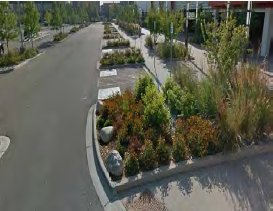 |
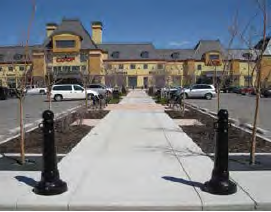 |
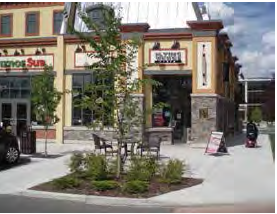 |
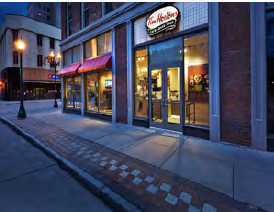 |
| Internal parking lot landscaped islands | Linear green spaces aligned with pedestrian pathway | Green space at walkway commercial retail unit corner | Storefront walkway treatment change |
- A high degree of internal landscaping should be provided to help with pedestrian wayfinding and to provide an enhanced level of safety and comfort along internal walkways.
- Green spaces or amenity spaces and the public realm are encouraged throughout the site.
- Use of boulevard-style landscaping within parking lot islands and linear green spaces which align with internal site pathways.
- Establishment of a strong tree canopy along the major pedestrian and vehicle traffic (routes).
- Use of curbed landscaped islands at the end of each parking aisle.
- Changes in parking lot paving treatment to help delineate pedestrian routes or other forms of traffic calming, including bulbing and raised or textured cross-walks.
- Changes in walkway entrance paving treatment to add visual appeal.
- Intensive tree/shrubbery plantings should be used to help buffer the impacts of vehicles.
- A well-lit, safe and clearly demarcated pedestrian access way must be provided to and from any rear yard off-street parking area.
- Planting of species suitable for winter climate.
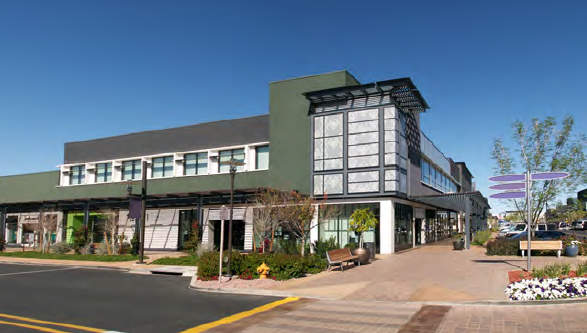 |
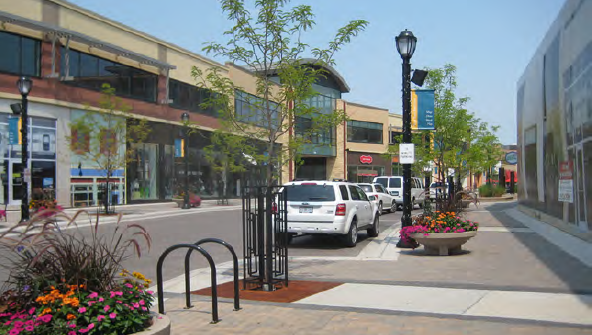 |
| Good Example of intensive landscaping clusters along the streetscape to foster pedestrian amenity areas | Good Example of sidewalk texture changes |
General Architectural Design Guidelines
The following information includes general architectural design guidelines which apply to all sites:
- Front building elevations should include changes in wall plane to provide relief and encourage development at a pedestrian scale.
- Building massing should avoid long, continuous, blank wall surfaces throughout the development.
- Building massing should create visual interest by using varied roof lines, heights and pitches.
- Building frontages should be constructed to define the edges of any public street or pedestrian-oriented area.
- Architectural elements should be incorporated into front building elevations including canopies, window projections, awnings, recessed entry ways, specialty signs, etc.
- The use of a variety of different exterior building materials and exterior building material colours are encouraged throughout the site to facilitate a vibrant pedestrian-oriented streetscape.
- The use of a consistent fenestration pattern along building elevations.
- Lighting on any site and on any portion of a building shall be full cut-off exterior lighting and should be arranged and shielded such that it does not become a hazard, annoyance or compromise the function of adjacent properties.
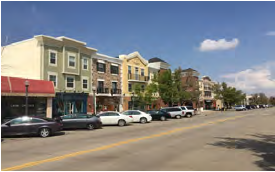 |
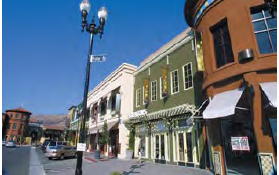 |
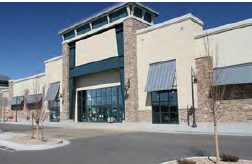 |
 |
| A good example of mixed use with vertical integration | Example of the use of multiple colours | A good example of varied roof heights and changes in wall plane and the use of a variety of canopies and awnings along the front elevation | A good example of a consistent fenestration pattern |
 |
PLAN APPROVAL PROCESS
Saskatoon Land’s approval of District Commercial and/or Mixed Use building plans is required prior to the submission of a building permit application. Builders are encouraged to meet with Saskatoon Land during the design stage to avoid potential delays.
The following information must be submitted to Saskatoon Land prior to the submission of a Building Permit Application:
- A site plan, to scale showing buildings, roads, parking, loading, fences, and the landscaping concept;
- Floor plans of all floors for each building to scale;
- All exterior elevations of each building to scale indicating location of materials and colours;
- Building section of each building to scale indicating building height, roof slopes, and features; and
- Specifications and colours for all exterior building materials of each building and for site development.
To avoid delays, plans should be submitted to Saskatoon Land well in advance of applying for a Building Permit. Plans will be reviewed for adherence to the architectural controls and Saskatoon Land may contact the applicant to discuss any required revisions. Plans which do not meet all the architectural controls will be reviewed by Saskatoon Land’s Design Review Committee. The Design Review Committee’s decision is final and any revisions will be required to be made before approval.
Upon approval of the drawing set, Saskatoon Land will issue an approval letter to the applicant. Following this, builders may apply for their respective Building Permit. At the building permit stage, Saskatoon Land may review the Building Permit drawings again to ensure they are substantially consistent with the plans submitted during the review process.
Periodically, Saskatoon Land will inspect the project to ensure it is in substantial accordance with the approved plans. Builders/developers will be responsible for correcting any deficiencies to dwelling elevations that deviate from the approved plans.
Please send plans via email to: landarchcontrols@saskatoon.ca